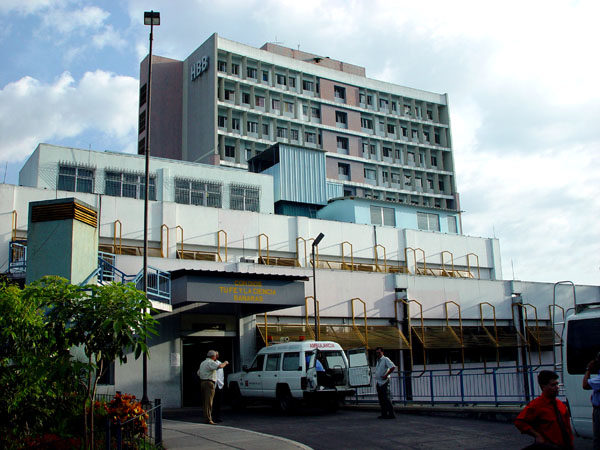2008-2009 World Disaster Reduction Campaign
Hospitals Safe From Disasters: Reduce Risk, Protect Health Facilities, Save Lives

Photo: © OPS-OMS/J. Jenkings
Hundreds of hospitals and heath facilities are destroyed or damaged every year by disasters caused by natural hazards such as earthquakes, hurricanes and floods. Millions of people are left without emergency care during and after disasters when hospitals and health facilities fail to function.
“Hospitals Safe from Disasters” is a global campaign being launched this year, by the secretariat of the International Strategy for Disaster Reduction (UNISDR) and the World Health Organization (WHO), with support from the Global Facility for Disaster Reduction and Recovery (GFDRR) of the World Bank.
Hospitals, health facilities and health services are a community’s lifeline in normal times and are especially critical in times of disaster.
The importance of hospitals and all types of health facilities extends beyond the direct life-saving role they play. They are also powerful symbols of social progress and a prerequisite for stability and economic development. With current knowledge and strong political commitment, countries can reduce risk in hospitals and health facilities and make them safe from disasters by reducing their vulnerability to natural hazards.
Hospitals are safe from disasters when health services are accessible and functioning, at maximum capacity, immediately after a disaster or an emergency. Apart from this, when safe they will not collapse during disasters, killing patients and staff; they can continue to function and provide services as a critical community facility when it is most needed; and they are organized, with contingency plans in place and a health workforce trained to keep the network operational.
The price we pay for the failure of hospitals or health facilities due to disasters is too high. In comparison, the cost of making hospitals safe from disasters is minimal. Disaster damage to health systems is a human tragedy, results in huge economic losses, deals devastating blows to development goals, and shakes social confidence. Making hospitals and health facilities safe from disasters is an economic requirement, and also a social, moral and ethical necessity.
You Can Contribute!
Get Involved in the World Campaign!
Participate in National Platforms for Disaster Risk Reduction: The health sector should take a proactive role in National Platforms for Disaster Risk Reduction or similar coordination mechanisms.
Become an agent of disaster risk reduction: An intimate knowledge of one’s own work environment can help make a health facility safe from disasters. Hospital plans are everyone’s business and all health workers must contribute to their preparation.
Seek opportunities to update skills and knowledge: Health workers and all staff working in health facilities — from the largest to the smallest — must constantly update their knowledge and skills about hazards and risk reduction to improve their leadership role in emergency situations.
The most expensive hospital is the one that fails:
Hospitals and health facilities represent an enormous investment for any country. Their destruction imposes major economic burdens.
Disasters are a health and a social issue:
Not only is health treatment critical in the aftermath of a disaster, damage to health facilities and systems affects development long into the future.
The health workforce must be agents of disaster risk reduction:
Health workers are central to identifying potential health risks from natural hazards and promoting personal and community risk reduction measures.
The UN global disaster reduction campaigns are important communication initiatives organized by the ISDR secretariat. They are designed to raise awareness among people all over the world, as well as among all professional sectors with regard to what they can do to protect their countries and communities from the negative effects caused by natural hazards. As part of the campaigns, a number of activities are organized, each year, based on different themes, and as of 2006 every two years. Their primary goals to build local capacities to strengthen a system for disaster reduction (at local, regional and international levels).
The International Day for Natural Disaster Reduction: October 8, 2008
The World Disaster Reduction Campaign, which extends throughout the year, culminates on the International Day for Disaster Reduction. The United Nations designated the second Wednesday of each October as the day devoted to highlight the importance of disaster reduction throughout the world. In 2008, the International Day will be commemorated on October 8.
Para mayor información contactar a:
Margarita Villalobos mvillalobos@eird.org
Julio Trelles jtrelles@eird.org |